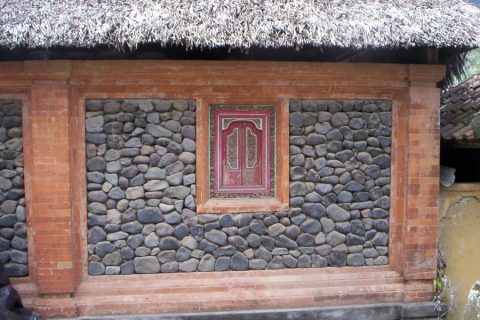Designing Houses for Cave Men

This article is about sustainable house design so of course, the logical place to start is by looking for salt in Peru. If you canoe down the Amazon basin a decent distance from town and stumble across someone, the first thing they will probably say is “Have you got any salt”? People paddle for weeks upriver to trade for salt. That salt has probably been cut from the salt lakes of Bolivia and trucked hundreds of miles down the Andes. The Amazonian Indians source salt from fairly rare clays. Many animals commune at river bank clay licks for the same reason.
For most of human history, people have lived with a scarcity of salt (except maritime dwellers), also scarce calories, fat, sugar and protein. 12 000 years ago, every human on earth was a hunter gatherer. If they happened across a glut of food, they couldn’t necessarily store it long or carry it far, so they’d usually just stuff themselves. This instinct has never really left us. There’s plenty of salt here today, but we crave it and can’t stop ourselves eating more than we need. Just ask the National Heart Foundation.
We don’t just over consume salt – we over consume in many ways. This pattern of consumption, the instinctive drive to take what you can now in case there isn’t any tomorrow, has a down side – debt. Debt has been around traditional societies for a long time, longer than money. Even today, pig debt in tribal New Guinea or goat debt in tribal Africa has sent many a family into ruin for generations to come. We have certainly evolved an instinct to protect against malnutrition. We don’t seem to have evolved a corresponding instinct to protect against debt. Perhaps in evolutionary terms, food has been around longer than debt.
Anyway, when it comes to houses, there is the same problem. Look beyond every prospective house design client, past their well groomed exterior and you’ll encounter a recently emerged hunter gatherer descendant. The ancient part of their brain will more often than not drive the project to consume more – more comfort, better views (security against invasion, good food spotting), more stuff now. The instinct ignores debt. Debt is life changing. It determines how much of our life we will work. Financial debt means environmental debt.
Close to 0% of Australian “sustainable housing” is sustainable by definition. More often it’s of reduced environmental impact than the conventional comparison. The larger the “sustainable house”, the larger its environmental impact. And the job that you need to pay for this house is probably environmentally damaging. Until we have an economic system with full environmental accounting, economic activity more or less equals environmental degradation.
So, when going to an architect for your new house, aim to live with as little as possible. Live with a minimum of debt. Work less, enjoy life more.
(Artcile written in the Bellingen Courier Sun).



